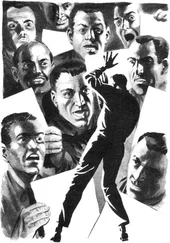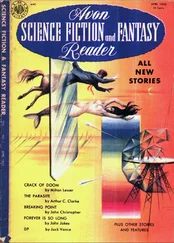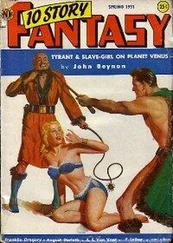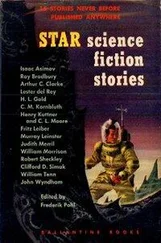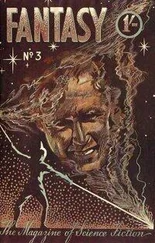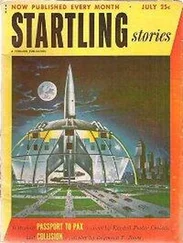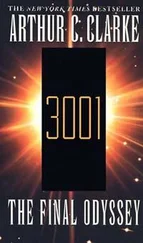Halfway to his first billion, he found himself chairman of the board. The company had only five directors—his mother, his older brother, his younger sister, Joe Wickram, and himself.
“Why not Diana?” he had asked Joe.
Emerson’s attorney looked at him over the spectacles which, he fondly believed, gave him an air of distinction in this age of ten-minute corrective eye surgery.
“Parents and siblings are forever,” he said. “Wives come and go— you should know that. Not, of course, that I’m suggesting…”
Joe was right; Diana had indeed gone, like Gladys before her. It had been a fairly amicable, though expensive, departure, and when the last documents had been signed, Emerson disappeared into his workshop for several months. When he emerged (without any new inventions, because he had been too engrossed in discovering how to operate his wonderful new equipment to actually use it) Joe was waiting for him with a new surprise.
“It won’t take much of your time,” he said, “and it’s a great honor: Parkinson’s are one of the most distinguished firms in England, established over two hundred years ago. And it’s the first time they’ve ever taken a director from outside the family—let alone a foreigner.”
“Ha! I suppose they need more capital.”
“Of course. But it’s to your mutual interest—and they really respect you. You know what you’ve done to the glass business, worldwide.”
“Will I have to wear a top hat and—what do they call them—spats?”
“Only if you want to be presented at court, which they could easily arrange.”
To his considerable surprise, Roy Emerson had found the experience not only enjoyable, but stimulating. Until he joined the board of Parkinson’s and attended its bimonthly meetings in the City of London, he thought he knew something about glass. He very quickly discovered his mistake.
Even ordinary plate glass, which he had taken for granted all his life—and which contributed to most of his fortune—had a history which astonished him. Emerson had never asked himself how it was made, assuming that it was squeezed out of the molten raw material between giant rollers.
So indeed it had been, until the middle of the twentieth century—and the resulting rough sheets had required hours of expensive polishing. Then a crazy Englishman had said: Why not let gravity and surface tension do all the work? Let the glass float on a river of molten metal: that will automatically give a perfectly smooth surface…
After a few years, and a few million pounds, his colleagues suddenly stopped laughing. Overnight, “float glass” made all other methods of manufacturing obsolete.
Emerson was much impressed by this piece of technological history, recognizing its parallel with his own breakthrough. And he was honest enough to admit that it had required far more courage and commitment than his own modest invention. It exemplified the difference between genius and talent.
He was also fascinated by the ancient art of the glassblower, who had not been wholly replaced by technology and probably never would be. He even paid a visit to Venice, now cowering nervously behind its Dutch-built dikes, and goggled at the intricate marvels in the Glass Museum. Not only was it impossible to imagine how some of them had been manufactured, it was incredible that they had even been moved intact from their place of origin. There seemed no limit to the things that could be done with glass, and new uses were still being discovered after two thousand years.
On one particularly dull board meeting Emerson had been frankly daydreaming, admiring the nearby dome of St. Paul’s from one of the few vantage points that had survived commercial greed and architectural vandalism. Two more items on the agenda and they’d be at Any Other Business; then they could all go to the excellent lunch that was waiting in the Penthouse Suite.
The words “four hundred atmospheres pressure” made him look up. Sir Roger Parkinson was reading from a letter which he was holding as if it were some species of hitherto unknown insect. Emerson quickly riffled through the thick folder of his agenda and found his own copy.
It was on impressive stationery, but the usual polynomial legal name meant nothing to him; he noted approvingly, however, that the address was in Lincoln’s Inn Fields. At the bottom of the sheet, like a modest cough, were the words “Est. 1803,” in letters barely visible to the naked eye.
“They don’t give the name of their client,” said young (thirty-five if he was a day) George Parkinson. “Interesting.”
“Whoever he is,” interjected William Parkinson-Smith—the family’s secretly admired black sheep, much beloved by the gossip channels for his frequent domestic upheavals—’he doesn’t seem to know what he wants. Why should he ask for quotes on such a range of sizes? From a millimeter, for heaven’s sake, up to a half-meter radius.”
“The larger size,” said Rupert Parkinson, famous racing yachtsman, “reminds me of those Japanese fishing floats that get washed up all over the Pacific. Make splendid ornaments.”
“I can think of only one use for the smallest size,” said George portentously. “Fusion power.”
“Nonsense, Uncle,” interjected Gloria Windsor-Parkinson (100 Meters Silver, 2004 Olympics). “Laser-zapping was given up years ago—and the microspheres for that were tiny. Even a millimeter would be far too big—unless you wanted a housebroken H-bomb.”
“Besides, look at the quantities required,” said Arnold Parkinson (world authority on Pre-Raphaelite art). “Enough to fill the Albert Hall.”
“Wasn’t that the title of a Beatles song?” asked William. There was a thoughtful silence, then a quick scrabbling at keyboards. Gloria, as usual, got there first.
“Nice try, Uncle Bill. It’s from Sergeant Pepper —‘A Day in the Life.” I had no idea you were fond of classical music.”
Sir Roger let the free-association process go its way unchecked. He could bring the board to an instant full stop by lifting an eyebrow, but we was too wise to do so—yet. He knew how often these brainstorming sessions led to vital conclusions—even decisions—that mere logic would never have discovered. And even when they fizzled out, they helped the members of his worldwide family to know each other better.
But it was Roy Emerson (token Yank) who was to amaze the massed Parkinsons with his inspired guess. For the last few minutes, an idea had been forming in the back of his mind. Rupert’s reference to the Japanese fishing floats had provided the first vague hint, but it would never have come to anything without one of those extraordinary coincidences that no self-respecting novelist would allow in a work of fiction.
Emerson was sitting almost facing the portrait of Basil Parkinson, 1874–1912. And everyone knew where he had died, though the exact circumstances were still the stuff of legend—and at least one libel action.
There were some who said that he had tried to disguise himself as a woman, so that he could get into one of the last boats to leave. Others had seen him in animated conversation with Chief Designer Andrews, completely ignoring the icy water rising around his ankles. This version was considered—at least by the family—to be far more probable. The two brilliant engineers would have enjoyed each other’s company, during the last minutes of their lives.
Emerson cleared his throat, a little nervously. He might be making a fool of himself…
“Sir Roger,” he said. “I’ve just had a crazy idea. You’ve all seen the publicity and speculations about the centennial, now that it’s only five years to 2012. A few million bubbles of toughened glass would be just right for the job everyone’s talking about.
Читать дальше

